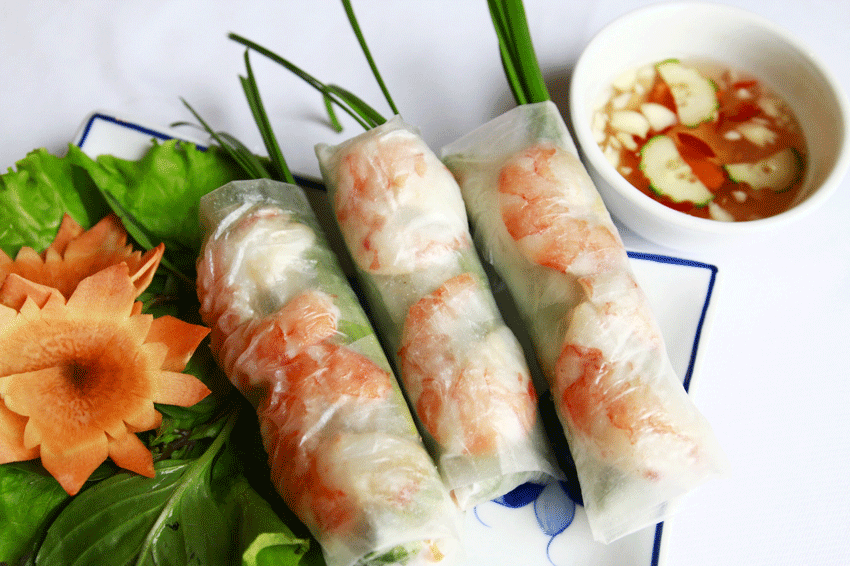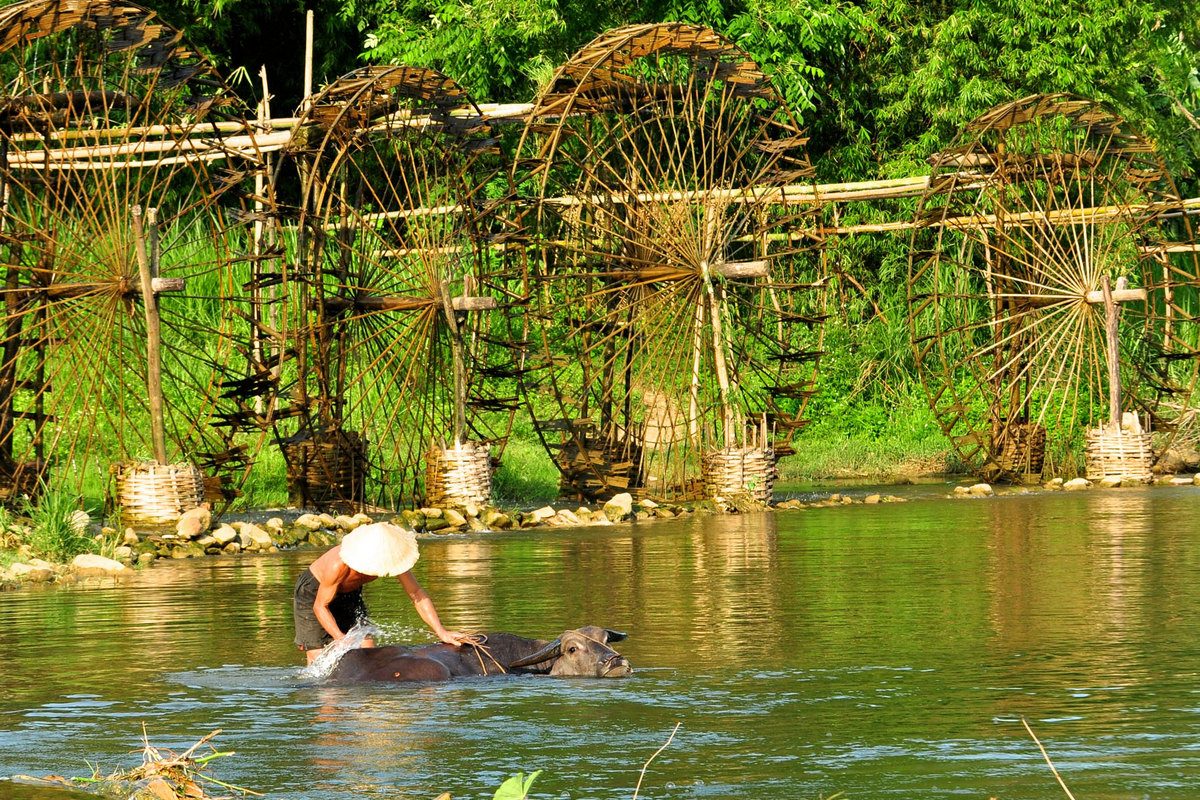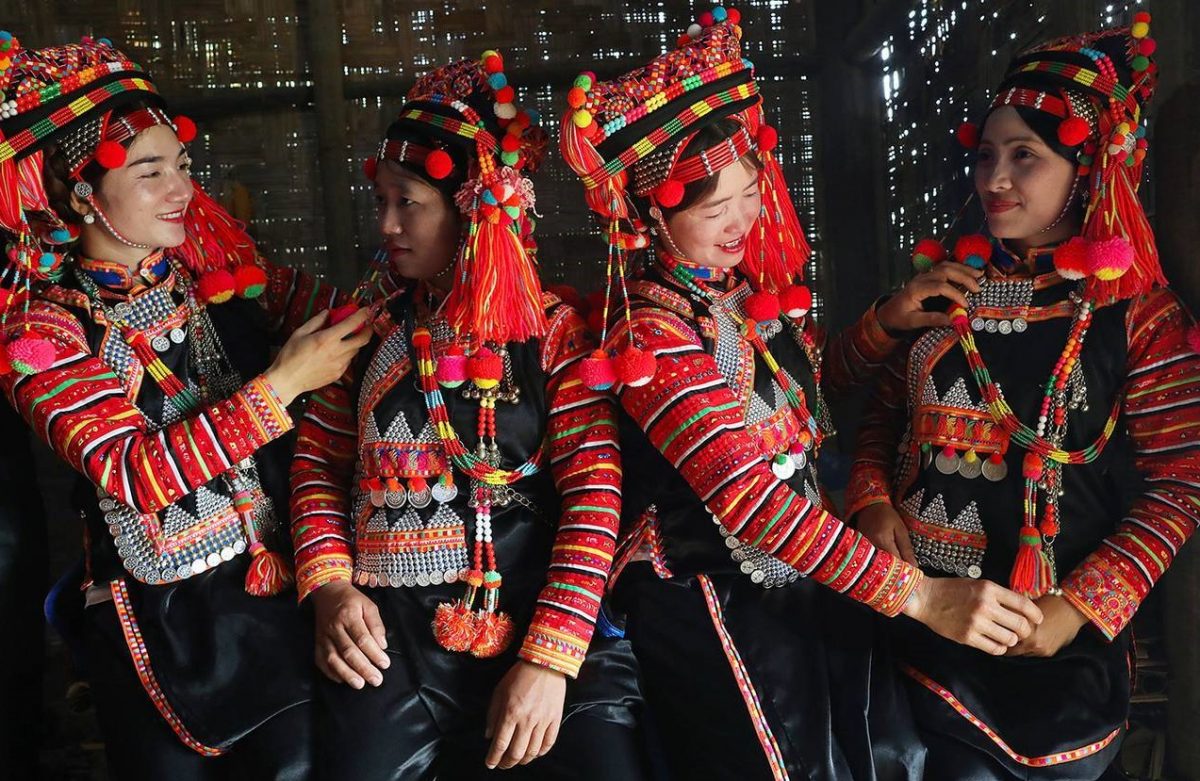Vietnamese Fried Spring Roll
07/09/2018Vietnamese Fried Spring Roll (“Nem Ran” by northerners and “Cha Gio” by southerners) is a Vietnamese dish traditionally. Ingredients used for the fried spring roll are different. Depending each local but usually it comprises of lean minced pork, sea crabs or unshelled shrimps, edible mushroom, dried onion, duck/chicken eggs, pepper, salt and different kinds of seasoning. There are also special variants of the traditional pork-based roll, such as Crab spring rolls or Nem Cua Be. This is a dish that can be served all year round, and present in almost every menu of Vietnamese restaurant abroad.
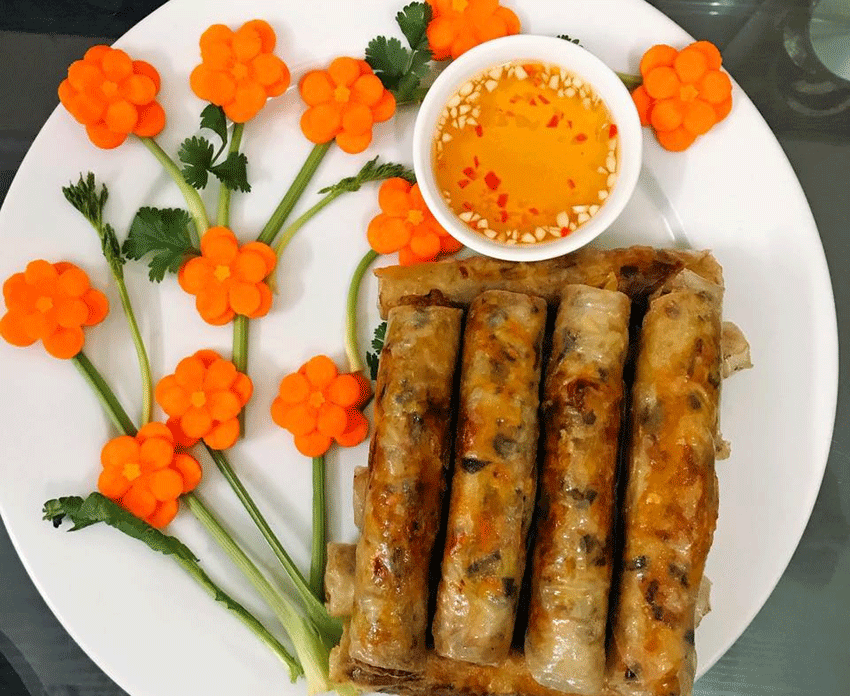
This dish looks somewhat like Nem Rán or Chả Giò but instead of being served fried, it is served fresh with many ingredients such as: boiled pork slices, boiled prawn, rice vermicelli, vegetables and other things. These rolls are considered to be a very popular appetizer with customers in Vietnamese restaurants.
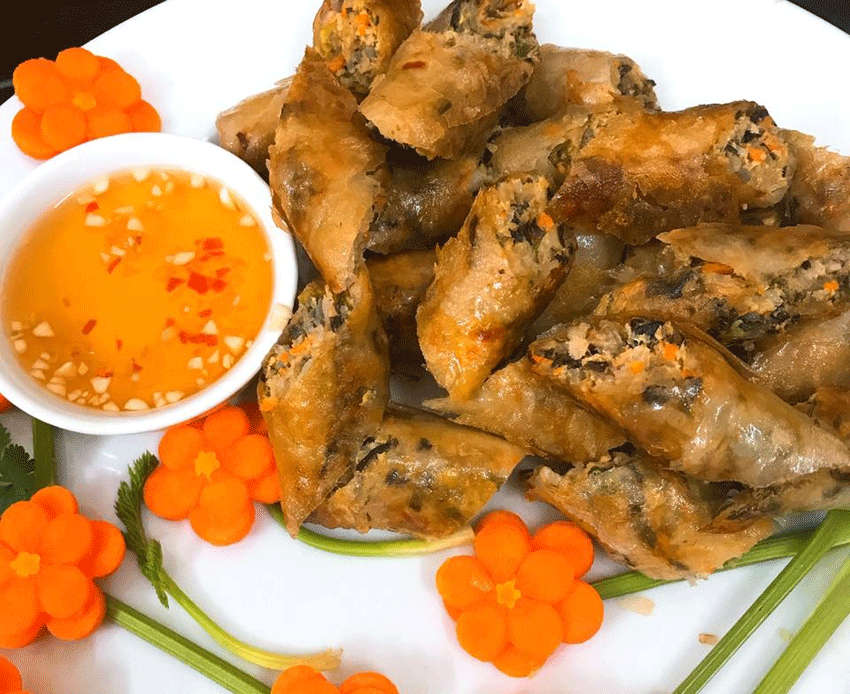
In southern Vietnam, these rolls are called gỏi cuốn, meaning salad rolls, while in northern Vietnam, these rolls are called nem cuốn, meaning nem rolls. In central Vietnam, they are simply called “rice paper” rolls. In the West, these rolls are called by several different English names, including “salad roll” and “summer roll.”
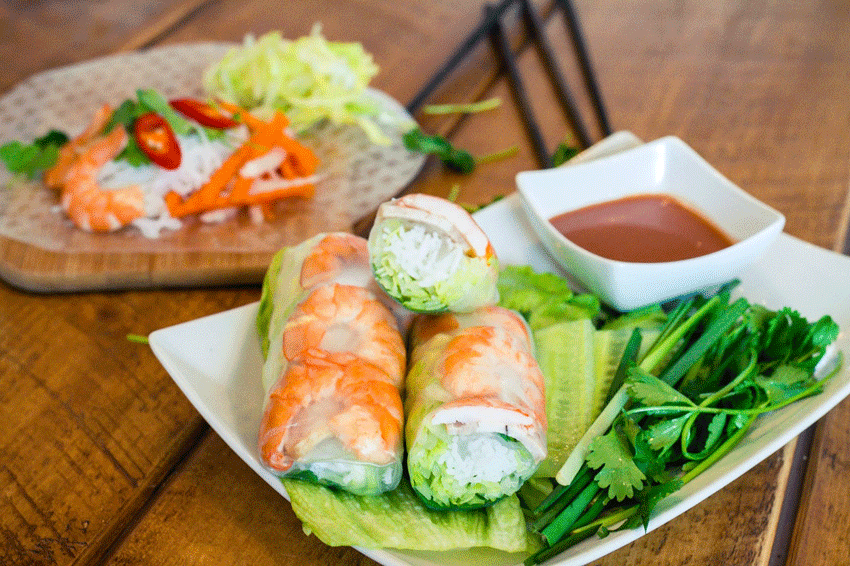
How to prepare:
The bánh tráng (rice paper) is dipped in water, then laid flat on a plate and the desired amount of ingredients is placed on top. The fresh gỏi cuốn is then rolled up and ready to be eaten. Gỏi cuốn can be served with tương xào (also known as hoisin sauce), which consists of ground tương (tương đen or tương xay) and mixed coconut water (or broth). Before being stir-fried with garlic and some sugar and then sprinkled with chili powder and ground peanuts. Alternatively, gỏi cuốn can be served with peanut sauce or other Vietnamese dipping sauces, such as nước chấm, a condiment based on fish sauce.
Where to eat?
Most Vietnamese restaurants offer spring rolls in their menu – look for the Vietnamese names “Nem Ran” by northerners and “Cha Gio” by southerners”.
